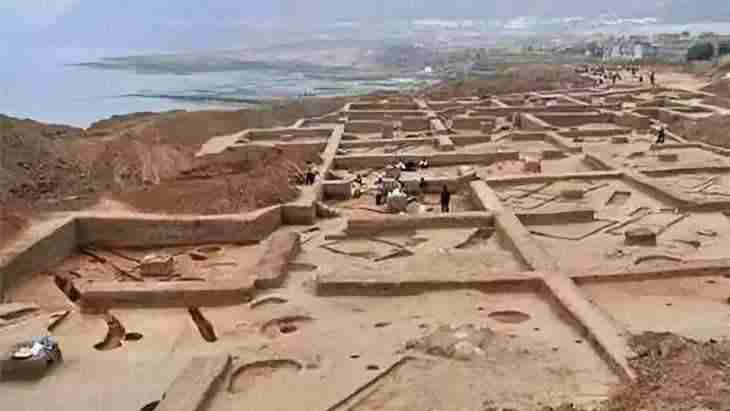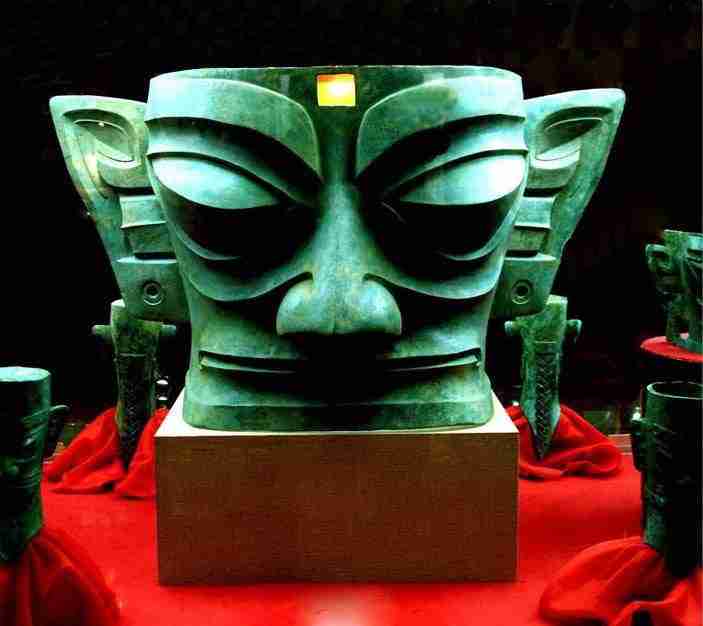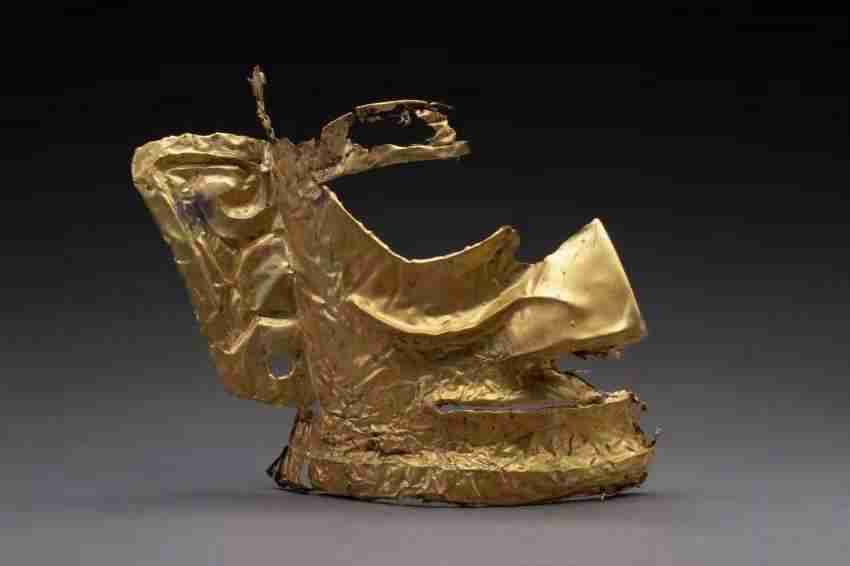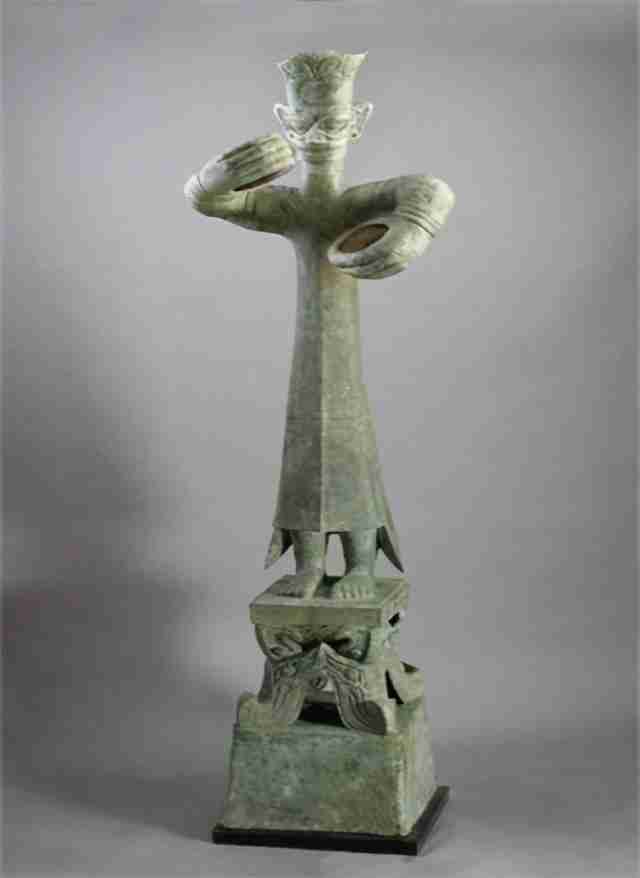Sanxingdui is considered one of the oldest and perhaps one of the ‘lost’ Chinese civilizations, but what exactly do we know about the Sanxingdui civilization?
Where Is Sanxingdui Located?

Also known as the Three-Star Piles, the Sanxingdui Civilization can be defined ad one of the Bronze Age civilizations, which is recorded to have flourished significantly in the Sichuan Basin, which is China’s most fertile area. The civilization lived in the Sichuan Basin for hundreds of years, just before they disappeared mysteriously between 1100 and 1200BC. At around this time, another or a similar civilization sprang up about 30 miles off Sanxingdui, in Jinsha. As a result, experts agree with the idea that the Jinsha civilization is pretty much a continuation of the Sanxingdui civilization/ culture. This civilization boasted its own unique rituals and customs, but also some of the most remarkable innovations.
While no one really knows where the Sanxingdui civilization went or disappeared, some experts point to floods or wars that may have led to the disappearance or the displacement of part of the civilization. Today, Chinese scientists argue that a massive earthquake led to a landslide, which then diverted the primary water source for the Sanxingdui, leading the water flowing past Jinsha instead.
Chinese’s Sichuan Province, alongside its capital of Chengdu, are both the focal points for both the discovery and the research of the most ancient Chinese civilizations. Besides the Sanxingdui civilization, many other Chinese historical and the oldest of Chinese relics have offered evidence of the existence of many varied ancient customs, crafts, and practices.
Sanxingdui History
3000 years after the Sanxingdui civilization disappeared, new discoveries of this civilization really shocked the world, with cultural relics over 3000 years discovered in the Sanxingdui Ruins after they had been newly excavated. The Sanxingdui civilization based in Sichuan Province in Southwest China stunned history buffs and archaeologists from China and the rest of the world.
But despite Sanxingdui’s discovery of 1929, the discovery of the Sanxingdui Ruins is one of the most interesting discoveries of the modern world.
But before we look at the archaeological discoveries of Sanxingdui, let’s look at the history of the Sanxingdui Civilization.
The Sanxingdui Civilization is believed to have been one of the largest centralized civilizations of Ancient China. It’s believed to date back to the rule of the Xia Dynasty between 2070BC and 1600BC, and also the Shang Dynasty between 1600BC and 1046BC. Archaeologists note that their discoveries of evidence of the walled city point to a possibility of the dynasty having been founded during the reign of the Shang dynasty.
One of the discoveries in the rivers by the scientist Niannian Fan, one of the archaeologists or scientists based in Chengdu’s Sichuan University, notes that since the initial discoveries made, his interest was piqued, and he has since noticed that the beds and ravines with many waterways led to and passed the Sanxingdui site were actually wider than the currently suggested flow rate of the river. And after the 2008 devastating earthquake in Sichuan, Fan hypothesized that the very same powerful earthquake struck the same region over 3000years ago, causing the high landslide from the mountain, changing Minjiang River’s course. This is believed to have led to the disappearance of the Sanxingdui civilization, as the water levels in the river dropped within a day or two after the earthquake struck.
He also notes that the ancient records in the text showing that the earthquake struck in 1099BC in Zhou Dynasty’s Shaanxi Province. Geographically, this location is 300 miles from the presumed earthquake’s epicenter; and the magnitude of the earthquake would have been felt in Sanxingdui as well. There are no written records of these by the Sanxingdui or the Jinsha civilizations, unfortunately.
What Was Found At Sanxingdui?
Numerous discoveries have been made since the very first discovery of the Sanxingdui civilization in the early spring of 1929. This initial discovery was made by a farmer and his son living in Guanghan village in the outer Chengdu region based in Southwest China in the Sichuan Province. They made the big discovery of the civilization while digging a well, uncovering the first evidence of the civilization that dates back to between 3000 and 5000 years ago.
The discoveries of the Sanxingdui Ruins/ site point to a richly enriched cultural connotation of the Sanxingdui origins and the formation of the Chinese civilizations. And so, it’s quite evident that in addition to the ritual systems that represented the rigorous and the standardized bronze wares in ancient China, the ancient Chinese belonging to the Sanxingdui civilization were big on self-expression through deeply ingrained beliefs and worship.
Sanxingdui Archaeological Discovery
The earliest discoveries of the Sanxingdui civilization are now regarded as the Sanxingdui Ruins. It was discovered in 1929, and this discovery now remains a rather pleasant surprise in archaeological history. Following the initial discovery, many other discoveries have been unearthed, including the mysterious bronze mask, as well as the 2-meter-tall bronze statuette and the more recent gold mask. All these are windows that give the rest of the modern world a peek of the ancient Chinese cultures which lived in Yangtze River’s upper reaches in the Pre-Qin period.
The biggest of these discoveries from the Bronze Age Civilization include the artifacts from pits that included items made of ivory, bronze, and jade. The discovered items appear to have been burned and broken in a ritual-like manner, which is why their discoveries shook the archaeological world.
The earliest of these discoveries were made in 1927. They were made of jade and stone, and thanks to their level of sophistication, the Sanxingdui is believed to have been one of the most sophisticated civilizations based along the Yellow River. The discovery by the farmer unearthed a rather large stack of relics made of jade – he made the discovery while dredging their irrigation ditch. Many of the Jade relics have since made their way to private collectors.
Then in 1931, another discovery made was brought to Vyvyan Donnithorne’s attention (a missionary). He soon discovered the importance of the relics’ discoveries, then contacted the magistrate and a Geology professor, Daniel Sheets Dye. The three individuals then visited the Sanxingdui site, photographing and measuring all the pieces they discovered. After this initial meeting, some of the relics were sent out to the WCUU museum. And in 1934, the new WCUU Museum director, David Crockett Graham, organized the very first archaeological excavation of the Sanxingdui site.
One of the biggest discoveries made later was in 1986, July 18th, in which about 800 objects were discovered, including the sacrificial pit that was discovered later in 1986, about 20-30meters from the first discovery point. Several bronze objects were discovered from the second pit, including animal-faced sculptures, male sculptures, bells, as well as decorative animal relics like chicks, snakes, dragons, birds, and even axes. There also were tables, belts, and masks discovered. Some of these objects were made of gold, and the ones made of jade included axes, rings, tablets, tubes, and knives.
After the initial discoveries, the pits have, over time, yielded more expertly-made bronze items showing that the Sanxingdui was a very advanced Chinese civilization. Other discoveries include clamshells and ivory. Researchers also discovered artistic-style pieces that were part of the Yellow River (Sanxingdui) civilizations.
- Large Bronze Mask

One of the oldest relics discovered and believed to be from the Sanxingdui civilization is the bronze mask that was discovered from Southwest China in Sichuan Province thousands of years ago. The discovered mask is a hefty 138cm wide and 66cm high bronze mask, which was uncovered from Sanxingdui Ruins’ Second pit.
- Incomplete Gold Mask

The gold mask discovered was made of at least 300grams of highly valuable gold, and as per estimates by archaeologists, the complete version of the gold mask could have weighed a total of 500grams. And if this estimate is an accurate one, then this gold mask is possibly the heaviest gold mask from the time that was discovered in China from this time.
- A Tall Bronze Standing Figure

The other big discovery from the Sanxingdui Ruins is the well-designed and very tall bronze figure that is just over 2.6meters tall. This standing figure is intricately designed, and it’s quite tall. It features a tall crown as well as a long robe featuring exquisitely designed embossed patterns of dragons, standing on the square-shaped base that is carved to look like a large beast. So, with its large base, this bronze figure is one of the largest life-sized human figures in the world.
In a 2001 discovery at the Jinsha Site, discoveries from the modern-day province of Chengdu were made of bronze items boasting the same kind of artistic vocabulary.
More discoveries have been made in the past, and a more recent one was made in March 2021, where at least 500 cultural relics were uncovered. These relics included a 3,000-year gold mask made of about 280grams of pure, valuable gold.
Other discoveries made over the years include the Bird-headed handle, a jade Zhang blade, a bronze bird, the Sanxingdui bird bronze head, gold sheath, and a Sanxingdui bronze head, among others.
I precisely had to say thanks once again. I do not know what I would’ve gone through without these solutions discussed by you directly on such a theme. Completely was an absolute frightful situation in my opinion, but coming across the specialised way you managed the issue forced me to jump with gladness. I’m just thankful for the service and expect you comprehend what a great job you’re putting in educating most people by way of your site. Most likely you haven’t got to know any of us.